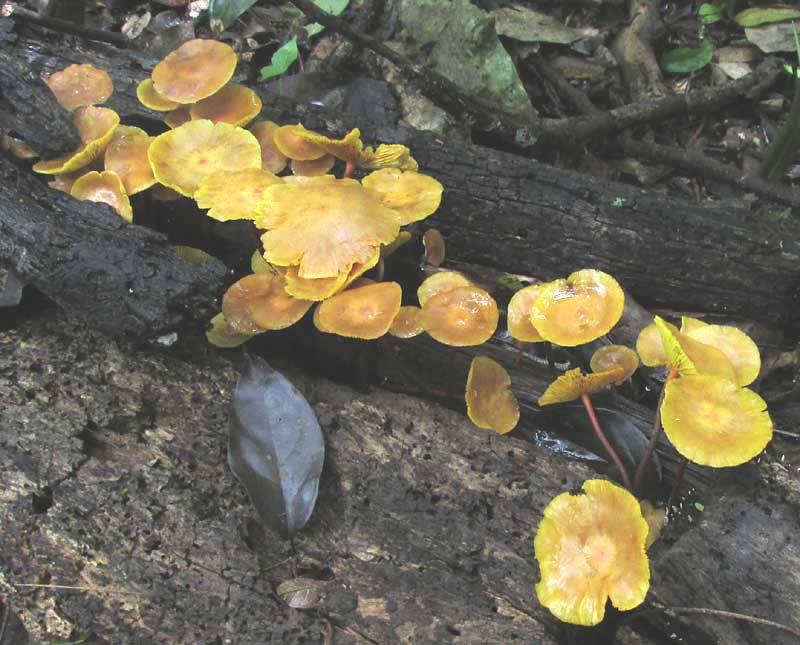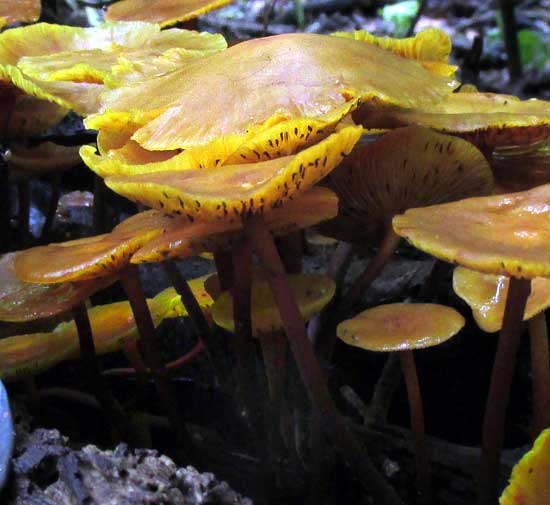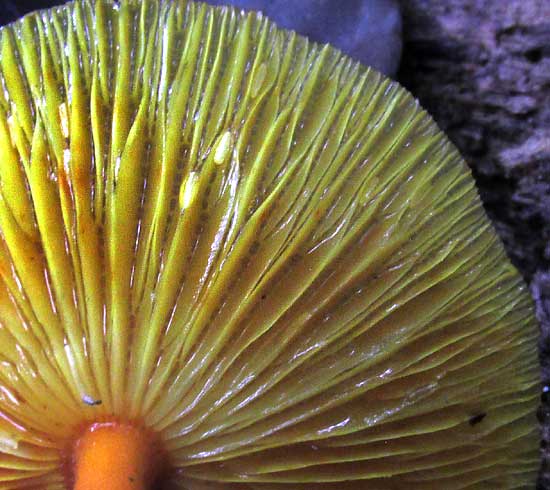Excerpts from Jim Conrad's
Naturalist Newsletter
from the June 26, 2016 Newsletter issued from Hacienda Chichen Resort beside Chichén Itzá Ruins; limestone bedrock; elevation ~39m (~128ft), N20.675°, W88.569°; central Yucatán state, MÉXICO
HEIMIOMYCES NEOVULUTIPES

The rainy season's arrival has very quickly transformed our brown-parched, extremely hot landscape into a humid, super-green and lush one where each afternoon clouds form, keeping sunshine down, and thus keeping temperatures lower. On Tuesday afternoon we had our best rain yet, exactly 50 mm (2in). In other words, mushrooms are up.
At the top of this page you can see some on a rotting log in deep, humid shade at the bottom of the shallow sinkhole, or rejollada, adjacent to the Hacienda. The caps are about 1-¾ inches across (45mm).
Some caps were flat, some concave and some convex, and the caps were smooth and somewhat sticky. The caps spread atop tall, slender stems that were fairly firm but not really tough or wiry, possessed no ring and arose from no cup, or volva, as seen below:

In that picture the dark items among the gills on the caps' undersurfaces are feeding insect larvae. A view of a cap's gills -- which split as they approach the cap's margin -- with some wormlike larvae among them, is shown below:

There you can also see that the gills are separated from the stem's point of attachment with the cap by a small distance. The manner by which gills attach or don't attach to stems is an important field mark, for in many species the gills connect to the stems in various ways, and in some they actually continue down the stem.
Maybe the most important feature for identification purposes, however, is one not shown, and that's the spore color. I brought two caps to the hut, placed them top-up on surfaces of two different colors, and the next morning found beneath the caps patches of pure white, the whiteness caused by white spores that had fallen from the gills during the night. I planned to photograph the spore print but a disturbed anole knocked it onto the dirt floor before I could get to it, destroying it.
*UPDATE: I couldn't identify this mushroom until eight years later in 2024, when I uploaded the above pictures to iNaturalist.org. There the AI identification program proposed the genus Heimiomyces, which I'd never heard of. Though this genus is seldom documented in Mexico, our mushrooms look like pictures on the Internet labeled HEIMIOMYCES NEOVELUTIPES, and that's the name I'll file this page under. The location nearest to the Yucatan I find of a documented observation of the species is in the Cayman Islands in the Caribbean to our east.
Other than such widely scattered observations across the world, I find little information about the species other than it's presence here and there.